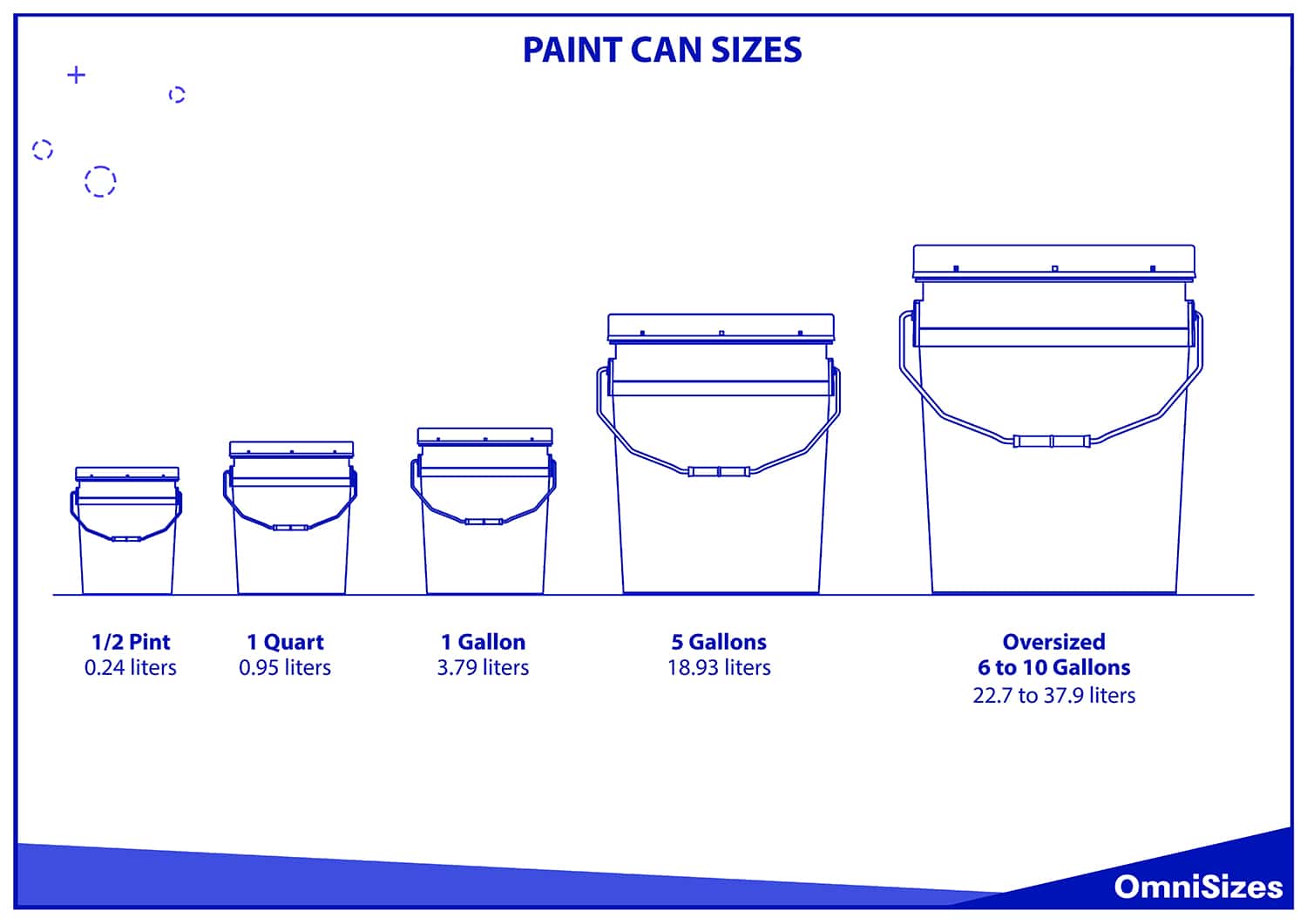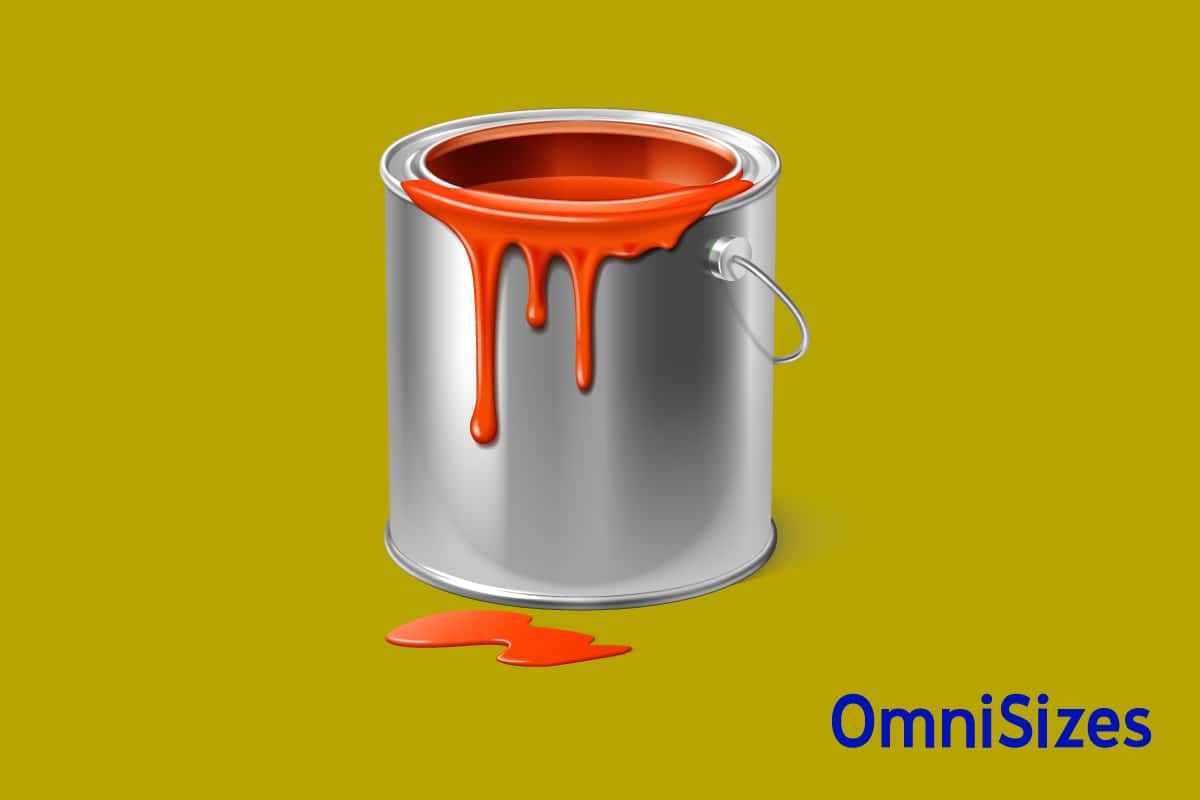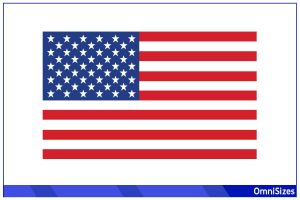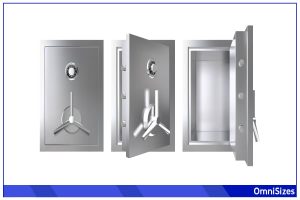When starting a painting project, one of the key decisions you’ll face is selecting the right paint can size. Paint can sizes vary and determine whether you have enough paint for your project without unnecessary waste or expense.
Paint cans are available in several sizes, the most common being quart (0.95 liters), gallon (3.79 liters), and five-gallon (18.93 liters) containers. The “best” paint can size corresponds to different project scales.
This guide will cover everything you need to know about paint can sizes, from standard dimensions to choosing the right size for your project.
Basic Paint Can Sizes

Paint can sizes are essential for both amateur and professional painters. The three primary sizes are quart, gallon, and 5-gallon.
Quart Size Cans
Quart-size paint cans, holding about 0.95 liters of paint, are perfect for small-scale projects. They are highly portable and easy to handle, making them suitable for touch-ups, accent walls, or smaller furniture pieces. The quart size also allows for experimenting with different colors without committing to a larger quantity.
Gallon Size Cans
Gallon paint cans, containing approximately 3.79 liters, are the most popular choice for most painting projects. Gallon cans offer a balance between sufficient coverage and manageable weight. They are also cost-effective, as buying paint in gallon sizes is generally cheaper per liter compared to quart sizes.
5-Gallon Buckets
5-gallon paint buckets are the largest standard size, holding about 18.93 liters of paint. They are best suited for very large projects like painting exteriors, multiple rooms, or commercial spaces. Professional painters often prefer this size for its efficiency in large-scale projects.
Specialty Paint Can Sizes
While quart, gallon, and 5-gallon paint cans are most common, you don’t have to look very hard to find specialty paint can sizes for any painting project.
Sample Size Cans
Sample-size paint cans are the smallest available, typically ranging from a few ounces to half a pint (about 0.1 to 0.2 liters). These cans are perfect for testing colors before committing to a larger purchase. They provide enough paint for a small area, allowing you to see how a color looks in your space and under different lighting conditions.
Half-Pint Cans
Half-pint paint cans hold approximately 0.24 liters of paint. They are slightly larger than sample sizes and are ideal for small projects like painting a piece of furniture, a door, or a window frame. These cans are also perfect for touch-ups, as they provide enough paint to cover minor scuffs and marks without the need for a larger can.
Oversized Cans
Oversized paint cans are less common but are available for specific needs. These cans can range from 6 to 10 gallons (about 22.7 to 37.9 liters) and are used for extremely large projects like industrial spaces or very large buildings. They are also used in professional settings where a specific color is frequently applied over large areas.
Choosing the Right Size for Your Project
Now that you know about common and uncommon paint can sizes, it’s not time to determine what size you need for your upcoming project.
1. Estimating Paint Needs
Choosing the correct paint can size starts with estimating how much paint you’ll need. To calculate, measure the area you plan to paint in square feet (length × width). Generally, a gallon of paint covers about 350 to 400 square feet.
2. Project Type and Paint Can Size
The type of project greatly influences the size of the paint can you should choose. For detailed work like trim or small furniture, a quart or even a sample size can be adequate. For standard room walls, a gallon usually suffices. Larger projects, such as painting the exterior of a home, typically require the use of multiple gallons or a 5-gallon bucket for efficiency.
3. Paint and Primer in One
For products that combine paint and primer, you may need less paint than usual. These formulations offer better coverage and may reduce the total amount of paint required.
4. Reusable Paint Cans for Leftovers
If you anticipate having leftover paint, consider buying sizes that allow for future use. Reusable paint cans are available for storing leftover paint, which can be useful for touch-ups or smaller projects later.
Tips and Tricks for Painters
Follow these tips and tricks to make your painting adventures roll smoothly!
1. Preparing Your Surface
Before you start painting, ensure your surface is clean, dry, and smooth. Remove old paint, fill in any holes or cracks, and sand the surface if necessary. This preparation helps the paint adhere better and last longer.
2. Selecting the Right Brushes and Rollers
The right tools can make a big difference in your painting project. For water-based paints, use synthetic brushes and rollers. For oil-based paints, natural bristles work best. A good quality brush and roller can provide a smoother finish and better coverage.
3. Using Painter’s Tape for Clean Edges
Apply painter’s tape along the edges where you don’t want paint. Make sure the tape is straight and firmly pressed down to prevent paint from bleeding underneath. Remove the tape soon after painting while the paint is still slightly wet for crisp lines.
4. Mixing Paint Thoroughly
Before using, stir your paint thoroughly. Paint components can separate when sitting, so mixing ensures consistent color and texture. For large projects, consider using a paint mixer attachment on a drill for efficient and thorough mixing.
5. Applying Primer for Better Results
Primer helps in covering up stains, dark colors, and provides a uniform base for your new paint. It can improve paint adhesion, resulting in a more durable finish. Some paints come with a built-in primer, but a separate primer layer is beneficial for challenging surfaces.






